Mustang horses embody the spirit of freedom and strength, and their presence is deeply rooted in the rich tapestry of American culture.”
– Tania Millen, founder of Mustang Heritage Foundation
Are you a horse lover looking for more information on the fascinating Mustang Horse?
As someone who grew up around horses, I’ve always been drawn to the beauty and power of these majestic creatures.
But when I first learned about Mustang Horses, I was immediately captivated by the freedom they represented and their wild spirit.
From their evolution on the American continent to their important role in shaping American history, there’s so much to discover about Mustang Horses.
I’m excited to share with you this comprehensive guide on Mustang Horse breed information.
Whether you’re interested in adopting a Mustang, learning more about their physical traits and behavior, or getting involved in conservation efforts, this guide has got you covered.
So let’s dive in and explore the world of Mustang Horses together!”
Quick Breed Profile
| Breed | Mustang |
| Other Names | American Feral Horse, BLM Horse, Range Horse |
| Origin | 16th-17th Century |
| Place of Origin | United States |
| Horse Type | Light Horse, Baroque, Riding, Trail, Utility, Show Horse |
| Blood Type | Warmblood |
| Lifespan | 30 Years |
| Adult Height | 13 to 16 hands |
| Adult Weight | 600-1000 Pounds |
| Colors | All Colors |
| Physical Traits | Characteristics are diverse and unique since different breeds of horses have contributed to the development of wild horses in various regions. |
| Movement | Varies, but in general short strided |
| Temperament | Wild, spirited, stubborn, highly energetic, intelligent, brave |
| Common Uses | Trail riding, pleasure riding, and ranch work |
| Associations and Registries | American Mustang and Burro Assoc, Inc. |
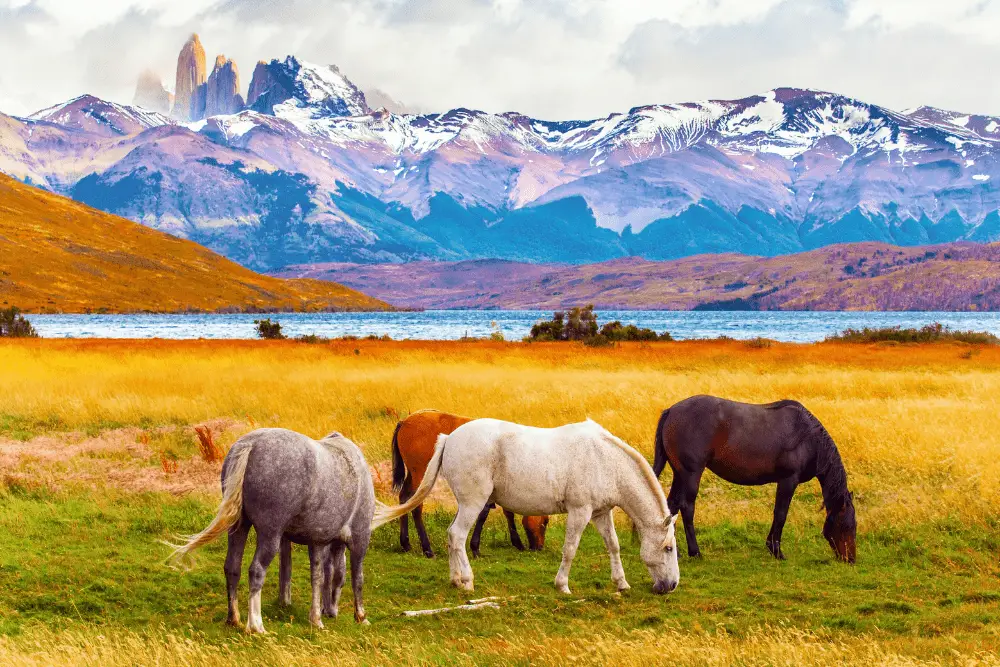
The History of Mustangs
For centuries, these majestic creatures have been captivating people’s hearts and stirring their imaginations. The tale of these wild horses is rich, layered, and full of wonder.
Let’s now take a look at the interesting history of the iconic wild horses of North America called the Mustang.
Mustangs Arrive in the Americas with the Conquistadors
It was 1493 when the conquistadors came to the Americas and brought along modern horses to the continent for the first time.
Columbus imported horses from Spain to the West Indies, and by 1519, Cortés had brought horses to the mainland of the Americas.
Horse Breeding in Mexico
By 1525, Cortés had imported enough horses to establish a center of horse-breeding in Mexico.
One hypothesis suggests that horse populations north of Mexico originated in the mid-1500s with expeditions of Narváez, de Soto or Coronado, but this theory has been refuted.
Native Americans Quickly Adopt the Horse
Native American people were quick to adopt the horse as a primary means of transportation.
The ability to run down bison from horseback allowed some tribes to leave agriculture in favor of hunting.
Horses also replaced dogs as pack animals and changed Native cultures in terms of warfare, trade, and even their diet.
The Spread of Horses
Horses eventually spread throughout the Americas, with Spanish horses in Florida though not influencing the Mustang.
The eastern Shoshone and southern Utes tribes became traders who distributed horses and horse culture from New Mexico to the northern plains.
West of the Continental Divide, the horses distribution moved north along the western slopes of the Rocky Mountains.
The Impact of Human Settlements on Wild Horses
As human settlements grew in the American West, Mustang populations were threatened by habitat loss and hunting.
Although there were once “millions” of mustangs in western North America,by the 1950s, the population had dropped to an estimated 25,000 horses.
Wild horses were considered a nuisance in the late nineteenth and early twentieth centuries and were frequently targeted for eradication by ranchers and government agencies.
Abuses linked to certain capture methods, including hunting from airplanes and poisoning water holes.
However, as public attitudes toward wild horses shifted in the mid-twentieth century, efforts were made to protect Mustangs and their habitat.
This led to the first federal free-roaming horse protection law in 1959.
Mustangs in the Present Day
Mustangs are now considered an important part of American history and culture.
The majority of wild mustangs in North America are presently found in Nevada, however sizable populations also exist in California, Oregon, Utah, Montana, and Wyoming.
The BLM has established Herd Management Areas to determine where horses will be sustained as free-roaming populations, but the on-range mustang population continues to grow.
The mustang is a symbol of freedom and the American West.
Its history is as rich and complex as the land it roams and this summary doesn’t do it justice.
Despite the challenges facing the population today, the mustang remains a beloved and enduring icon of the American West.
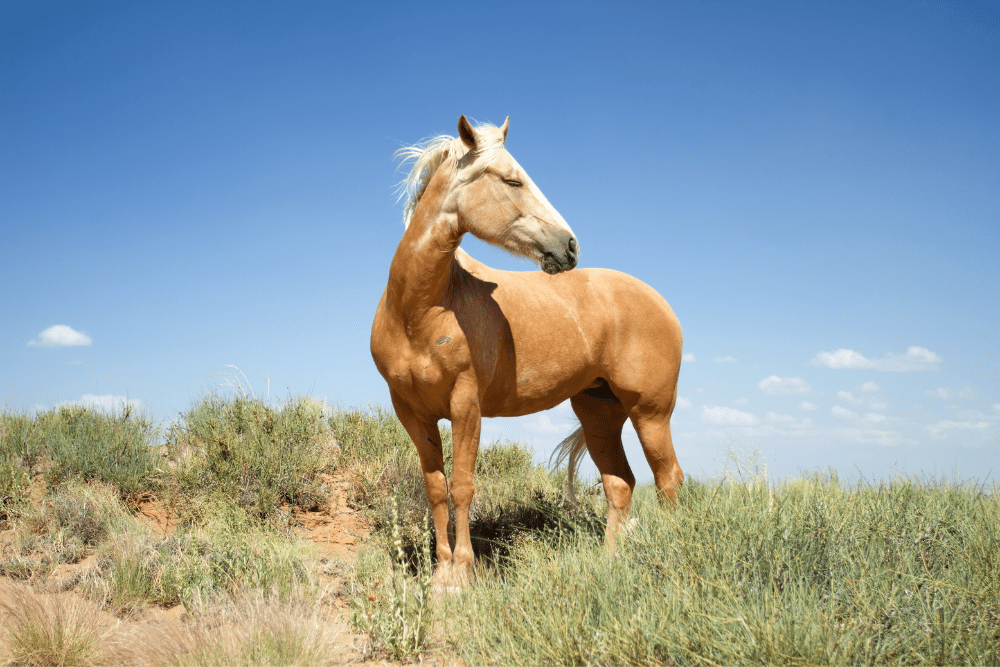
The Characteristics of Mustang Horses
Mustangs are a diverse breed of horse, and no two mustangs are precisely alike; this is one of the many features that distinguishes them different from other horses. Another difference between mustangs and other horses is that they have thicker mane and tail.
Let’s take a look at some of the key characteristics of Mustang Horses, including their types, physical traits, and adaptability.
Different Types and Classifications of Mustang Horses
Mustang Horses come in various types and varieties, each with its unique characteristics and heritage.
Some of the common types are classified based on the reserve they live in, including BLM (Bureau of Land Management), Forest Service, Comstock/Virginia Range, Badlands, and Salt River mustangs.
Every one of these varied herds of mustangs possesses distinctive traits that set them apart from one another in their own particular way.We will go more into different types of Mustangs in a moment.
Heritage and Physical Traits of Mustang Horses
The original Mustangs were the Colonial Spanish Horses, which have been mixed with other breeds and types of horses over hundreds of years.
The Mustangs’ characteristics are diverse and unique since different breeds of horses have contributed to the development of wild horses in various regions. The settlers’ preferences for certain breeds like cold or hot-blooded horses in different areas also influenced the Mustangs’ characteristics.
As a result, wild Mustang horses have varying physical features, with some being large and full-bodied, while others are smaller and daintier in appearance. The availability or scarcity of forage also plays a role in determining the size of these wild horses.
In terms of their appearance, Mustangs come in various colors, including black, bay, dun, palomino, gray, and spotted. Their height ranges from 13 to 16 hands, which further adds to the diversity of their physical attributes.
Overall, the Mustangs’ unique and diverse characteristics make them an intriguing breed, showcasing the influence of various factors on the development of this magnificent species.
Notably, their sturdy build despite size differences and tough hooves make them well-suited for life on rugged terrain.
Behavior and Adaptability of Mustang Horses
Mustang Horses are known for their intelligence, resilience, and independent nature.
They are extremely perceptive and resourceful due to generations of evolution in the environment.
Yet, they are not often easy to train because of their natural reluctance to approach humans and their tendency to flee when threatened.
One of the most remarkable things about Mustang Horses is their adaptability.
They’ve managed to do so for centuries while facing some of the world’s harshest environments, like the parched deserts of the American Southwest and the foreboding mountains of the Pacific Northwest.
Mustangs are hardy and self-sufficient, able to thrive on minimal resources and withstand extreme weather conditions.
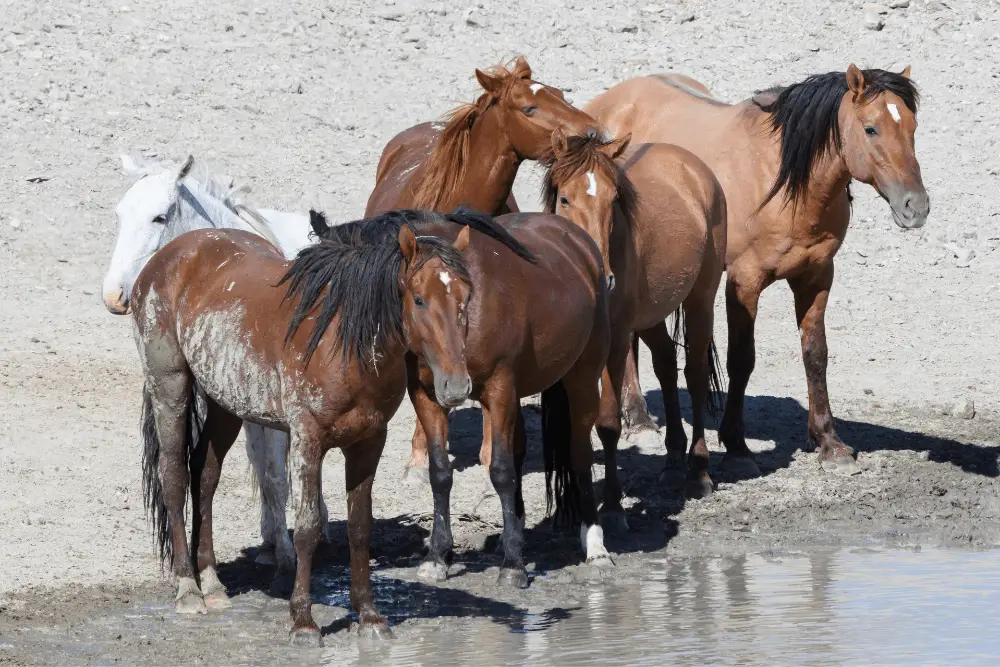
Types of Mustangs
Mustang Horses as you know are a type of feral horse that roam free in certain parts of the United States.
But did you know that there are several distinct types of Mustangs in the USA?
Let’s take a closer look at some of these unique Mustang breeds.
Colonial Spanish Mustang
Like I mentioned before these Mustangs are considered the “mother breed” of all Mustangs and are descended from horses brought to North America by Spanish conquistadors in the 16th century.
These horses shaped the culture and history of the American Southeast, and they are now recognized as the State Horse of North Carolina.
Colonial Spanish Mustangs typically have a compact, muscular build and come in a wide range of colors, including bay, chestnut, black, and gray.
Cerbat Mustang
These feral horses are native to the Cerbat Mountains of Arizona and are known for their calm temperament and ambling gait.
They are typically roan, chestnut, or bay in color and often have a blaze marking and white legs.
Cerbats are smaller than many other Mustang breeds, standing at around 14-15 hands, or 56-60 inches, tall.
Spanish Mustang
The Spanish Mustang is a breed that combines the even temperament of Colonial Spanish horses with the exotic roots of the Spanish Barb horse.
They typically have a small body, a slim chest, and big ears.
These horses are easy to ride and are often used for trail riding and ranch work.
Kiger Mustang
The Kiger Mustang is a distinct breed of Mustang that is native to the Kiger region of southwestern Oregon.
They are a hybrid of Sorraia, Andalusian, and Barb horses and are known for their striking dun, blonde, or cremello colors.
Kigers are friendly and personable, making them easier to break and train than some other Mustang breeds.
Abstang Mustang
The Abstang Mustang is a unique Mustang breed that has Arabian heritage.
They have a distinctive “high tail” and concave profile, unlike most other American feral horses that have straight or convex figures.
These horses are thought to have exceptional long-distance endurance and are often used for endurance racing.
Pryor Mountain Mustang
These feral horses are native to the Pryor Mountains of Montana and Wyoming and are known for their athleticism, grace, and high-kneed gait.
They are often used for endurance riding and have a strong reputation for their ability to handle tough terrain.
Pryor Mountain Mustangs are generally around 14 hands, or 56 inches, tall.
Coyote Canyon Mustang
These feral horses are native to California and have adapted to the region’s hot, dry climate.
They are smaller than many other Mustang breeds, with blocky square bodies and dun, roan, or chestnut tones.
Coyote Canyon Mustangs are known for their ability to protect their young or weak herd members by circling them in a defensive formation.
Sulphur Springs Mustang
These Mustangs are native to the Sulphur Springs Herd Management Area in Utah and have Spanish stock, but their genes have adapted to their habitat.
They are typically dun or grulla colored with stripes on their legs and dorsals, and their small size and athleticism make them well-suited to living in the rugged terrain of their native habitat.
Each of these nine types of Mustangs has unique physical and behavioral traits that make them well-suited to their particular environments.
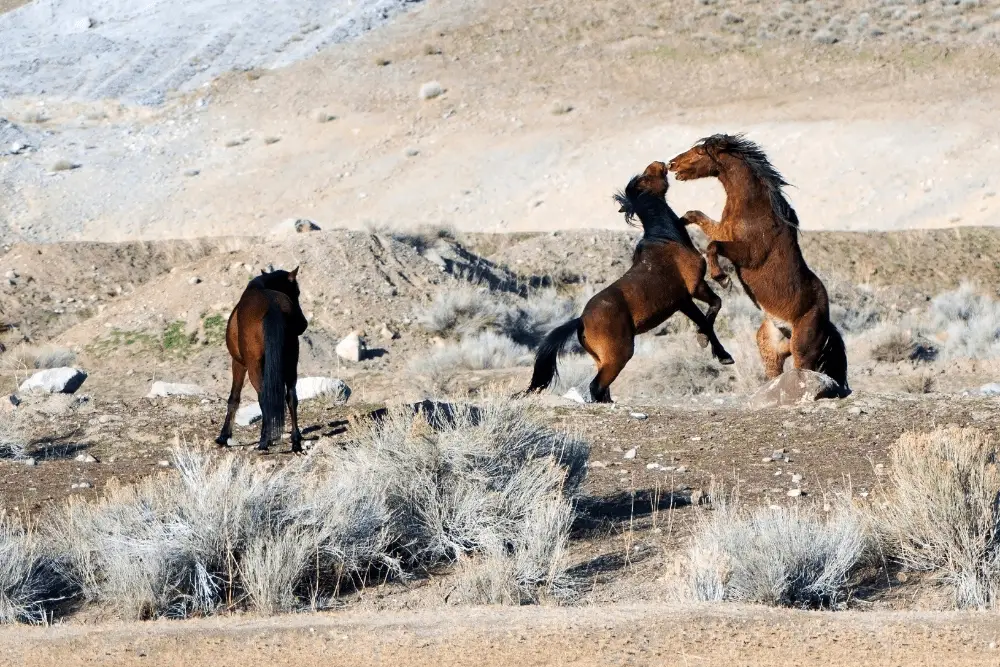
Land Use Controversies
Mustang Horses are often at the center of debates over public lands and wild horse management.
Many people disagree on the best way to conserve and manage wild horse populations, which has led to some controversial policies and decisions.
The Debate over Public Lands and Wild Horse Management
One of the main controversies surrounding Mustang Horses is the debate over public lands and how they should be used.
Several wild horse herds roam the public lands overseen by the Bureau of Land Management (BLM), and the appropriate population density for these herds is frequently debated.
Some people argue that the number of horses should be limited.
In order to protect the health of the land and other wildlife, while others believe that horses should have free range on public lands.
The Impact of Human Activities on Wild Horse Populations
Another controversy surrounding Mustang Horse conservation is the impact of human activities on wild horse populations.
Human development, such as roads and housing, can fragment and destroy wild horse habitats, leading to a decline in populations.
Additionally, some people hunt and capture wild horses for sport or profit, which can have a significant impact on herd sizes and genetic diversity.
The Future of Mustang Horse Conservation
Despite the controversies surrounding Mustang Horse conservation, many organizations and individuals are working hard to protect and preserve these iconic animals.
The future of Mustang Horse conservation depends on finding a balance between the needs of horses, the health of public lands, and the interests of human communities.
By working together and continuing to research and innovate, we can help ensure a bright future for these beloved animals.
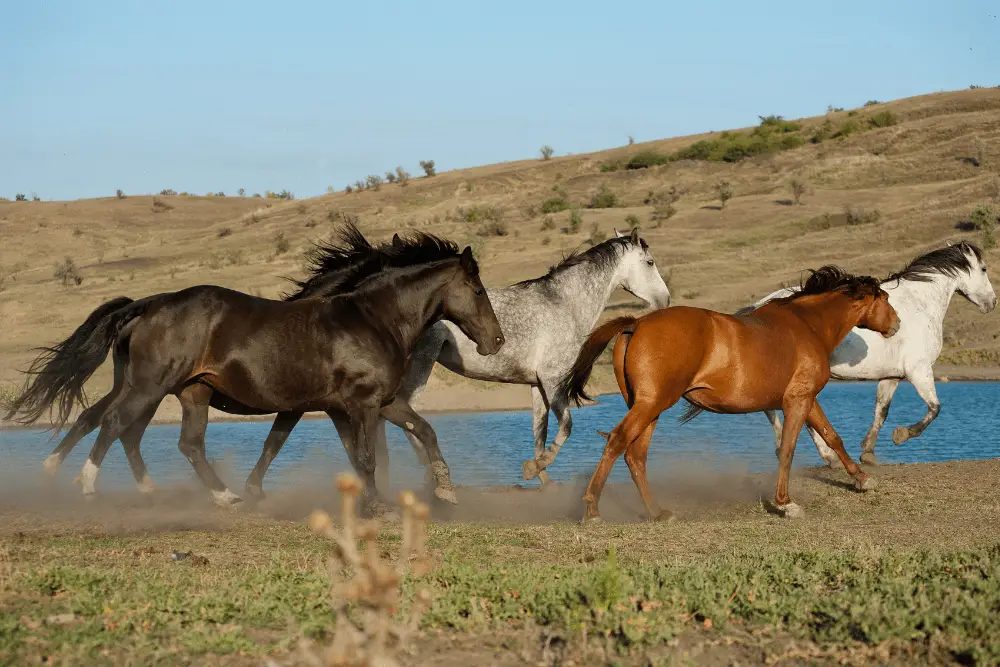
Conservation and Management of Mustang Horses
When it comes to protecting and taking care of Mustang Horses, there are a number of organizations and groups that do important work to make sure these beloved animals are safe and healthy.
Let’s take a closer look at some of the key players in the world of Mustang Horse conservation.
The Bureau of Land Management (BLM)
As the primary government agency responsible for managing wild horse and burro populations on public lands, the BLM plays a critical role in Mustang Horse conservation.
Through their Wild Horse and Burro Program, the BLM works to maintain healthy wild horse populations while also ensuring that these animals don’t overgraze or damage fragile ecosystems.
The BLM also oversees the adoption and sale of wild horses and burros that have been removed from public lands.
Mustang Sanctuaries and Advocacy Groups
There are also many non-profit organizations and sanctuaries that are dedicated to protecting Mustang Horses and advocating for their rights.
These groups work to raise awareness about the issues facing wild horses.
They also provide care and shelter for horses that have been rescued or removed from public lands, and push for policy changes that will help ensure a brighter future for Mustangs.
Some notable Mustang advocacy groups include the American Wild Horse Campaign, Return to Freedom, and the Cloud Foundation.
The Mustang Heritage Foundation
This organization plays a unique role in the world of Mustang Horse conservation, as it works to promote the adoption and training of Mustangs for equestrian sports and other uses.
Through events like the Extreme Mustang Makeover, the Mustang Heritage Foundation helps to showcase the talents and abilities of these amazing animals.
While also providing them with the care and training they need to succeed in their new homes.
Overall, the conservation and management of Mustang Horses is a complex and important issue that requires the involvement of many different organizations and individuals.
By supporting these groups and learning more about the issues facing Mustangs, we can all play a role in ensuring that these magnificent animals continue to thrive for generations to come.
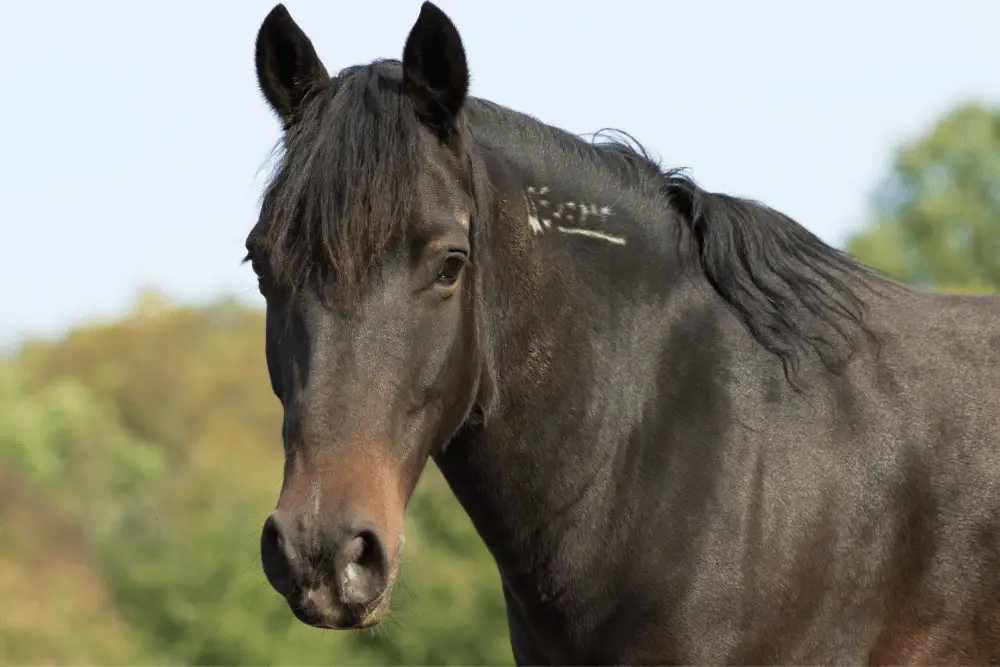
Mustang Horses in Equestrian Sports
If you’re a fan of equestrian sports, you may be wondering how Mustang Horses fare in racing, rodeo, jumping, and dressage.
Mustangs are known for their agility, speed, and stamina, which makes them a popular choice for many disciplines.of sports.
Racing and Endurance Riding
Mustangs have been known to excel in long-distance races and endurance rides, thanks to their natural athleticism and stamina.
In fact, the annual Extreme Mustang Makeover competition, includes a trail class that tests the horse’s endurance and ability to navigate obstacles.
Rodeo and Western Riding
Mustangs have also made their mark in rodeo events such as bronc riding and barrel racing.
Their quick reflexes and speed make them ideal for these fast-paced events.
Additionally, Mustangs have a natural talent for working cattle, making them ideal for ranch work and team penning.
Jumping and Dressage
While Mustangs may not be as commonly associated with jumping and dressage as some other breeds, they are certainly capable of excelling in these disciplines.
Many Mustangs have a natural aptitude for jumping, and their athleticism and agility make them well-suited for dressage movements such as collection and extension.
Mustang Horses are versatile and talented athletes that can hold their own in a variety of equestrian sports.
So whether you’re looking to compete in a rodeo event or simply enjoy a leisurely trail ride, a Mustang may be just the horse you’re looking for!
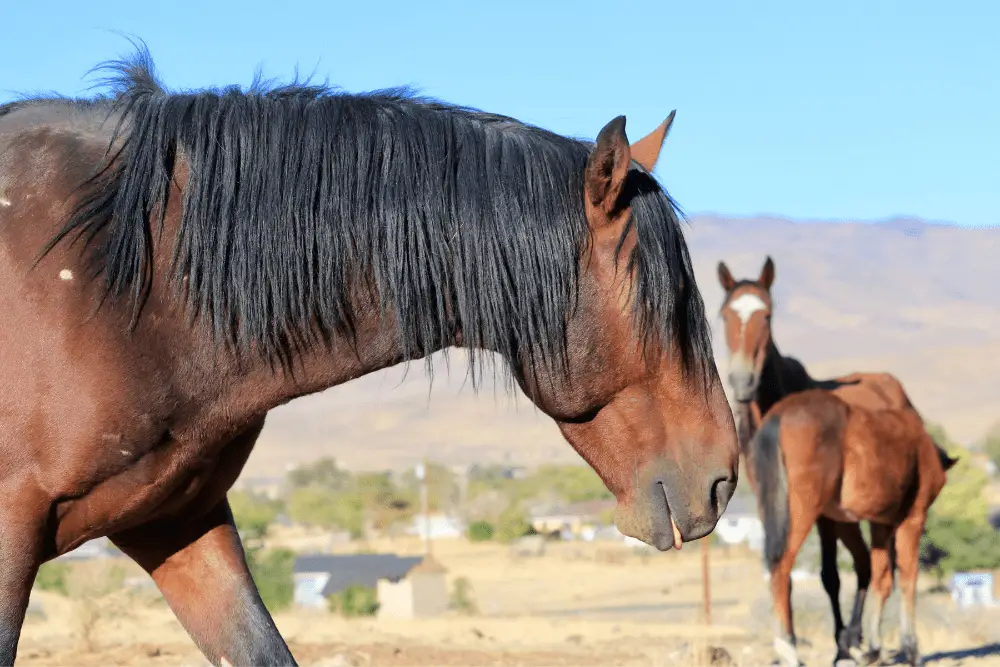
Is a Mustang Right for You?
If you’re considering adopting a Mustang Horse, there are a few things to keep in mind to ensure that you’re a good match for this unique breed.
Let’s go over some key factors to consider before bringing a Mustang into your life.
Considering Your Horse Experience
Before adopting any horse, it’s important to honestly assess your level of horse experience.
While Mustangs are known for their hardiness and adaptability, they can also be more challenging to train and handle than many other breeds.
If you’re a first-time horse owner or have limited experience, you will want to work with an experienced trainer or seriously consider adopting a horse with a calmer disposition.
Assessing Your Facilities and Resources
Another important factor to consider is whether you have the facilities and resources to properly care for a Mustang.
When a Mustang first arrives you need to have proper fencing. Ideally metal pipe fencing over 5 ft tall. Often round pens are used at first.
These horses will need plenty of space to run and roam when they get settled in.
So if you don’t have access to a large pasture or outdoor arena, a Mustang may not be the right fit.
Additionally, Mustangs like all other horses require regular veterinary care, feeding, and exercise, so make sure you have the resources to provide for a horse’s basic needs.
Understanding the Time and Financial Commitments
Adopting a Mustang is a serious commitment, both in terms of time and finances.
These horses require daily care and attention, including feeding, grooming, and exercise.
Additionally, if you plan to train your Mustang, you’ll need to dedicate time and resources to this process.
Mustangs can also live for 20 years or more, so make sure you’re prepared for a long-term commitment.
Mustang Horses can be incredibly rewarding companions for the right owner, they’re not the right fit for everyone.
Before adopting a Mustang, make sure you honestly assess your horse experience, facilities and resources, and understand the time and financial commitments involved.
When properly trained and socialized, a Mustang can make excellent riding partner, thanks to their intelligence, agility, and endurance.
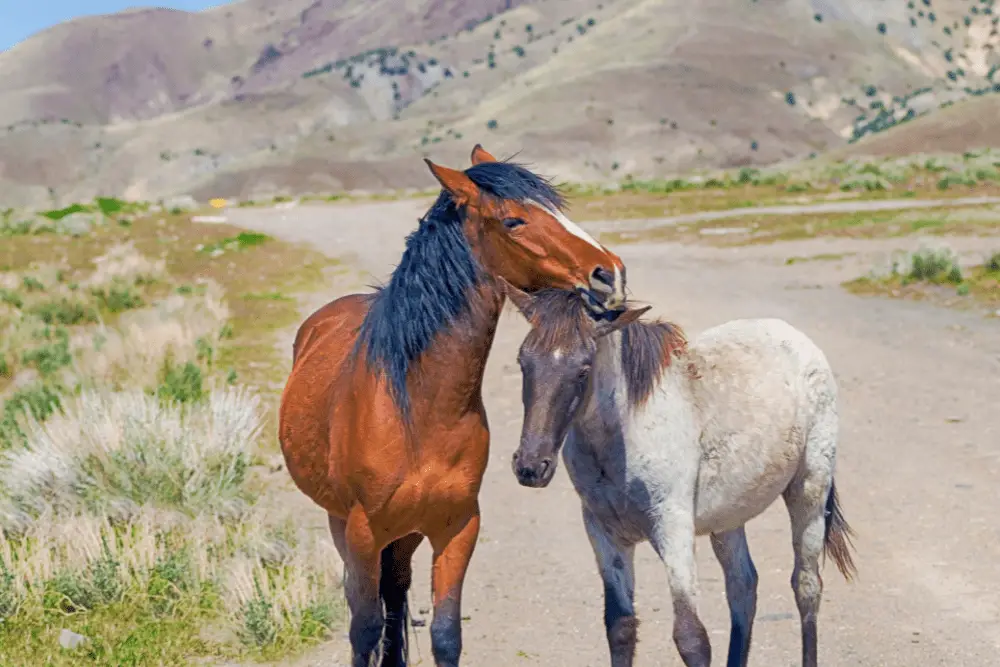
Adopting a Mustang
If you’re considering adopting a Mustang, you’re in for a rewarding and unique experience.
Adopting a Mustang not only gives you the opportunity to own a beautiful and fascinating horse, but also helps support the conservation and management of these iconic animals.
Let’s look at what you need to know about the adoption process, training and care for a newly adopted Mustang, and the benefits of adopting a Mustang.
The Adoption Process
Adopting a Mustang is a process that involves several steps, but it’s relatively straightforward and accessible to most horse enthusiasts.
Like I have mentioned The BLM is responsible for managing the wild horse and burro populations in the United States, and they offer several adoption programs for Mustangs.
You can find out more about these programs on the BLM’s website or by contacting a BLM office near you.
To adopt a Mustang, you’ll need to meet certain requirements, such as having adequate facilities and resources to care for the horse.
You’ll also need to fill out an adoption application and pay a nominal adoption fee, which is typically $125 and higher if you are bidding for a Mustang.
Once your application is approved, you’ll be able to select a Mustang from the available animals, either online or in person at a BLM facility.
Training and Care for a Newly Adopted Mustang
One of the unique challenges of adopting a Mustang is that they are wild animals.
They require some training and socialization to adapt to their new environment and human companions.
However, with patience and the right approach, you can build a strong bond with your Mustang and help them thrive.
It’s important to provide your Mustang with a safe and comfortable living space, such as a pasture or corral with adequate fencing and shelter.
You’ll also need to provide them with regular veterinary care, including vaccinations, deworming, and dental care.
Feeding and nutrition is another important aspect of caring for a Mustang, as their diet may differ from that of domestic horses.
In terms of training and socialization, it’s best to start slowly and build trust with your Mustang through positive reinforcement and patient handling.
You may also want to work with a professional trainer who has experience with Mustangs to help you develop a training plan that meets your horse’s needs and temperament.
The Benefits of Adopting a Mustang
Adopting a Mustang is not only a rewarding experience for horse lovers, but also has important benefits for the environment and the future of these iconic animals.
By adopting a Mustang, you’re helping to support the conservation and management of wild horse populations, which are facing increasing pressures from human activities and land use changes.
You’re also giving a loving home to a beautiful and unique animal that has a rich history and legacy in American culture.
In addition, adopting a Mustang can be a great way to challenge yourself and learn new skills as a horse owner.
Mustangs are known for their intelligence, adaptability, and resilience, and they can thrive in a wide range of equestrian activities, from trail riding to competitive events.
So if you’re looking for a new adventure in the world of horses, consider adopting a Mustang and become a part of the legacy and conservation of these amazing animals.
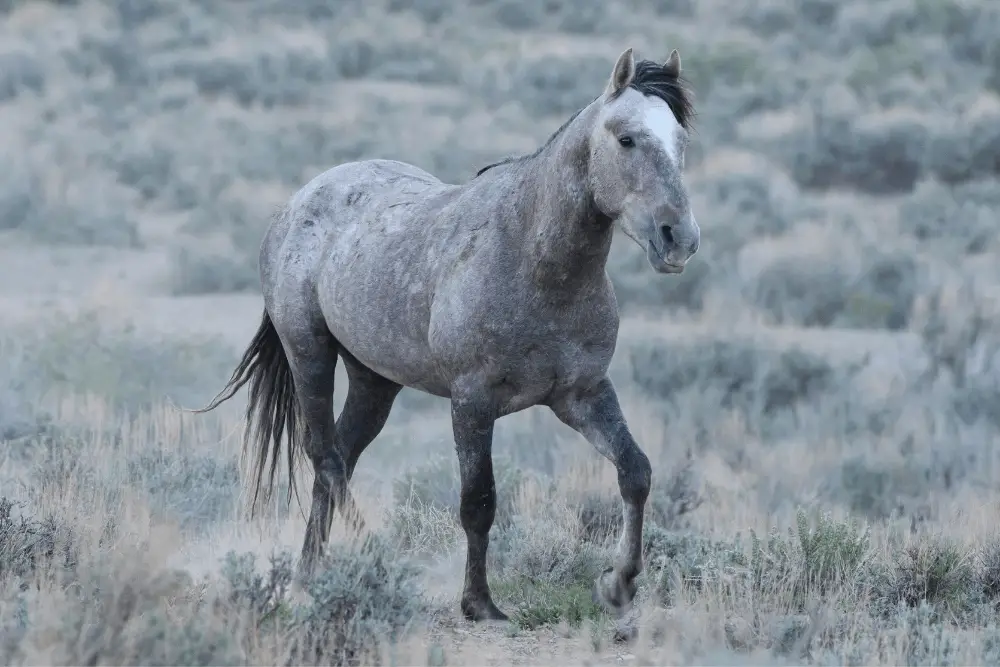
The Extreme Mustang Makeover
If you’re looking for a unique way to get involved with Mustang Horses, the Extreme Mustang Makeover through the Mustang Heritage Foundation might be just what you’re looking for!
This program is designed to showcase the incredible potential of Mustang Horses and promote their adoption into loving homes.
So, what exactly is the Extreme Mustang Makeover?
It’s a competition where trainers have just 100 days to gentle and train a wild Mustang Horse.
Oftentimes, the Bureau of Land Management will round up and relocate wild horses that have become a nuisance on public properties.
The trainers work tirelessly to transform these wild horses into well-behaved, trained horses that can excel in a variety of equestrian sports.
But the Extreme Mustang Makeover is more than just a competition. It’s an opportunity to educate the public about the beauty and potential of Mustang Horses.
The event is open to the public, and attendees can watch the trainers work with the horses, attend clinics and demonstrations, and even adopt a Mustang of their own.
The Training and Adoption Process
So how does the training and adoption process work?
After the 100-day training period, the horses are showcased at the Extreme Mustang Makeover event.
Trainers and potential adopters can interact with the horses and see their new skills in action.
Then, the horses are available for adoption through a competitive bidding process.
Adopters must meet certain requirements, such as having a suitable facility and the ability to care for a wild horse.
Success Stories and Impact
The success stories of the Extreme Mustang Makeover are truly inspiring.
Many horses have gone on to successful careers in equestrian sports, while others have become beloved companions.
The program has also had a positive impact on Mustang Horse adoption rates and public awareness of their plight.
If you’re interested in getting involved with the Extreme Mustang Makeover, there are a few things you can do.
First, check out the Mustang Heritage Foundation’s website.
On their site, you’ll find more information about upcoming events and competitions.
You can also learn about how you can support their efforts to promote Mustang Horse adoption and education.
By getting involved with this program, you’ll be helping to make a positive impact on the lives of these incredible animals.
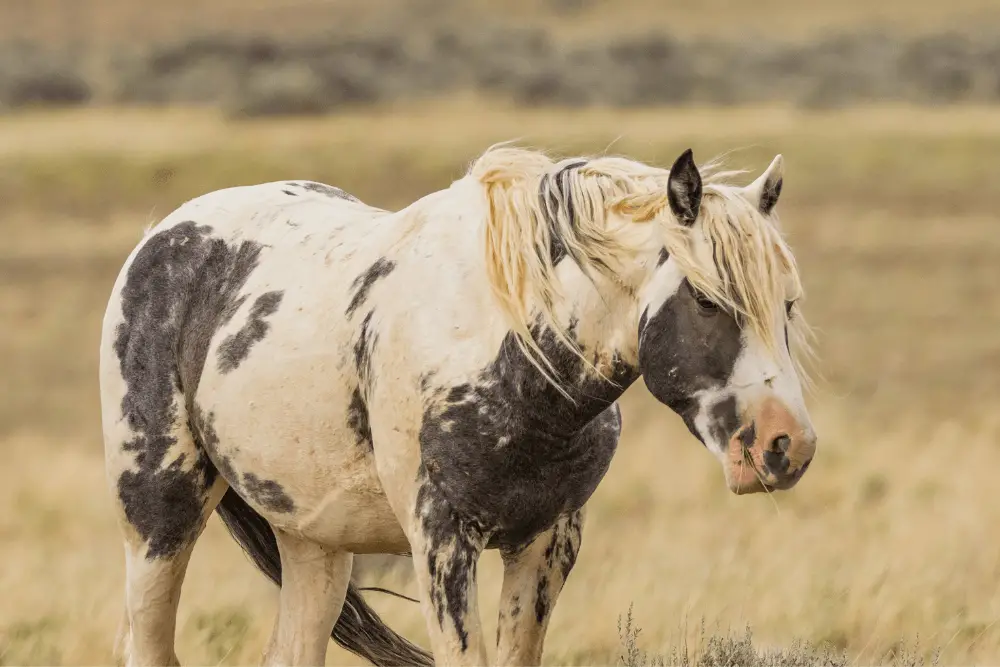
FAQs about Mustang Horses
How did Mustang horses get their name?
The name “Mustang” comes from the Spanish word “mestengo,” which means “wild” or “stray.”
The term was used to describe the feral horses that roamed the American West and were descended from horses brought over by Spanish explorers in the 16th century.
What is so special about a Mustang horse?
Mustangs are known for their hardiness, intelligence, and agility.
They are highly adaptable and can thrive in a variety of environments.
They also have a unique history and cultural significance in American history.
How many mustang horses are left?
It’s estimated that there are currently around 95,000 Mustangs living in the United States.
About half of them are on public lands managed by the Bureau of Land Management.
However, the population is constantly fluctuating due to factors such as roundups, adoptions, and natural predation.
Which state has the most wild horses?
Nevada has the largest population of wild horses in the United States, with an estimated 47,000 Mustangs living on public lands.
Do mustangs have any predators?
Mustangs are prey animals and are hunted by predators such as mountain lions and coyotes.
However, their main threat comes from humans, including ranchers who view them as competition for grazing land.
How do Mustang horses survive in the wild?
Mustangs have evolved to survive in harsh environments with limited resources.
They are highly adaptable and can subsist on sparse vegetation and find water in arid regions.
They also have a strong social structure and use herd behavior to protect themselves from predators.
Why don’t ranchers like mustangs?
Ranchers often view Mustangs as competition for grazing land and water resources.
They also argue that Mustangs can damage the environment and compete with livestock for resources.
Why are mustangs not wild horses?
Mustangs are descended from domesticated horses brought over by Spanish explorers, but they have since become feral and adapted to living in the wild.
While they may not be considered “wild” in the traditional sense, they have been living in the American West for centuries and have a unique cultural and historical significance.
Are Mustang Horses Fast?
Mustang Horses are known for their agility and endurance, but their speed can vary depending on the individual horse and their fitness level.
Generally, Mustangs are considered to be swift runners and are capable of reaching speeds over 30 miles per hour in short bursts.
However, their ability to maintain that speed over long distances may be limited compared to some other horse breeds that have been specifically bred for racing.
Conclusion
As we near the end of our exploration into the world of Mustang Horses, I hope you’ve enjoyed discovering the rich history and unique characteristics of this remarkable breed.
Whether you’re an experienced horse owner or just starting out, Mustangs offer a special experience that’s both exhilarating and fulfilling.
If you’re considering adopting a Mustang or seeking to learn more about these magnificent horses, there are numerous opportunities available to you.
You can visit local sanctuaries, get involved with advocacy groups, or attend events like the Extreme Mustang Makeover to witness the incredible agility and intelligence of these majestic creatures.
By learning about various horse breeds such as Mustangs, you can expand your knowledge and deepen your appreciation for the world of horses.
So why not take the next step and continue your journey into the wonderful world of equestrianism?
With so many extraordinary horse breeds out there, there’s always something new and exciting to explore.
Cheers, Kacey
P.S. Did you like this article? Gallop over to:

